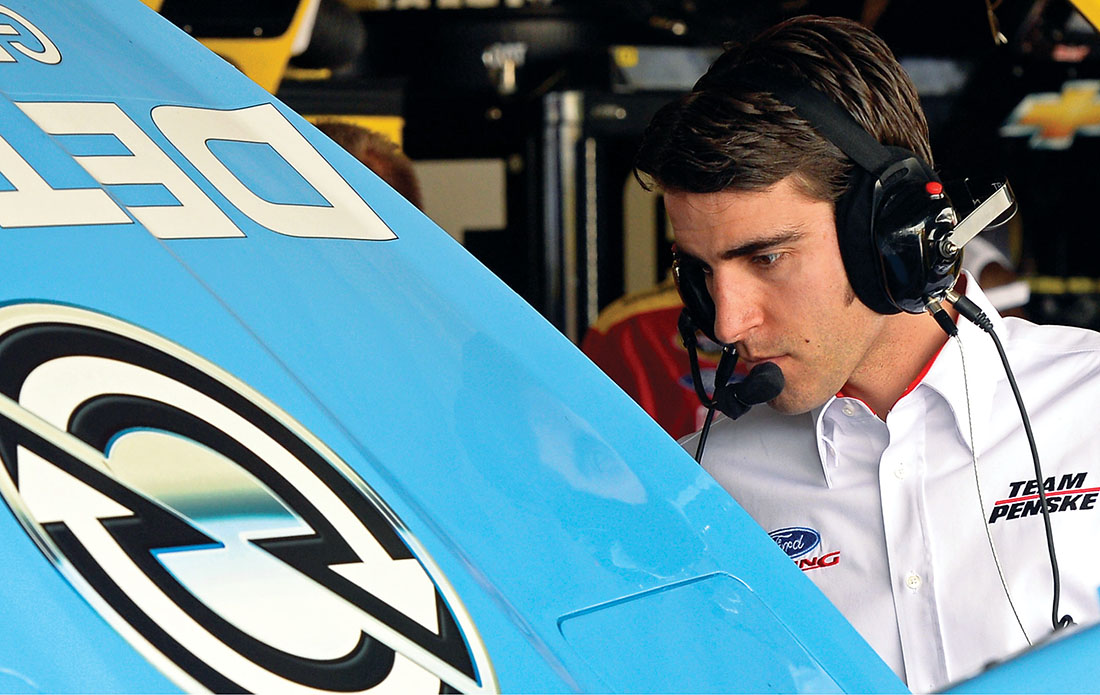
When it comes to his love for auto racing, Travis Geisler is always willing to go the extra mile—thousands of them, really, if one considers his college years. While at Vanderbilt he made the 1,200-mile round trip between Nashville and his hometown of Pittsburgh nearly every weekend just to compete in an amateur NASCAR racing series.
“I ended up graduating with a Saturn that had 230,000 miles on it,” says Geisler, who has a degree in mechanical engineering. “I’d race Friday and Saturday, drive back to Nashville on Sunday night, and go to class during the week. I was fortunate to have a lot of energy at the time and some understanding professors.”
For as long as Geisler can remember, racing has been an integral part of his life. As a boy he spent countless hours at the local track watching his father, Lynn Geisler, compete in dirt late-model racing. By the time he was a teenager, the younger Geisler was already working on his father’s car, helping organize sponsor events and even doing some racing himself.
“While everybody else was going hunting or fishing, we went racing as a family,” he says. “Growing up like that gave me a lot of hands-on training. It also taught me about the organizational side of racing—how being prepared makes a big difference once you get to the track.”
All that time spent under the hood and behind the wheel has paid off for Geisler. Since 2011 he has served as competition director for Team Penske, a racing organization based near Charlotte, N.C. His job entails managing crew chiefs and track operations for Penske’s NASCAR teams, which compete in both the top-level Sprint Cup Series and its “minor-league” counterpart, the Nationwide Series.
The two Penske drivers currently competing in the Sprint Cup Series are Brad Keselowski and Joey Logano. Both have enjoyed impressive victories in 2014 but, as Geisler says, “There’s no such thing as a perfect weekend in this business.” As gratifying as it is when one of the Penske teams wins, he explains, it inevitably means disappointment for the other—and more time spent back at the drawing board.
“There’s only one winner,” he says. “When you have two teams, the best you can hope for is that one of them will come away happy. You then have to work with the other group to figure out why they didn’t win.”
Beyond driver performance, any number of variables can affect the outcome of a race, including weather conditions, fuel mileage and tire wear. Geisler’s role is to account for as many of these details as possible and then, as he says, “enter them into an equation to come up with the best answer.” Doing so requires not only strong analytical thinking but also good intuition.
“It’s my favorite part of racing,” he says, “in that you combine all the principles learned in engineering school with your gut instincts. The adrenaline kicks in when you’re trying to make those important decisions on the fly and outsmart the 41 other teams on the track.
“It’s as competitive a thing as I can imagine.”